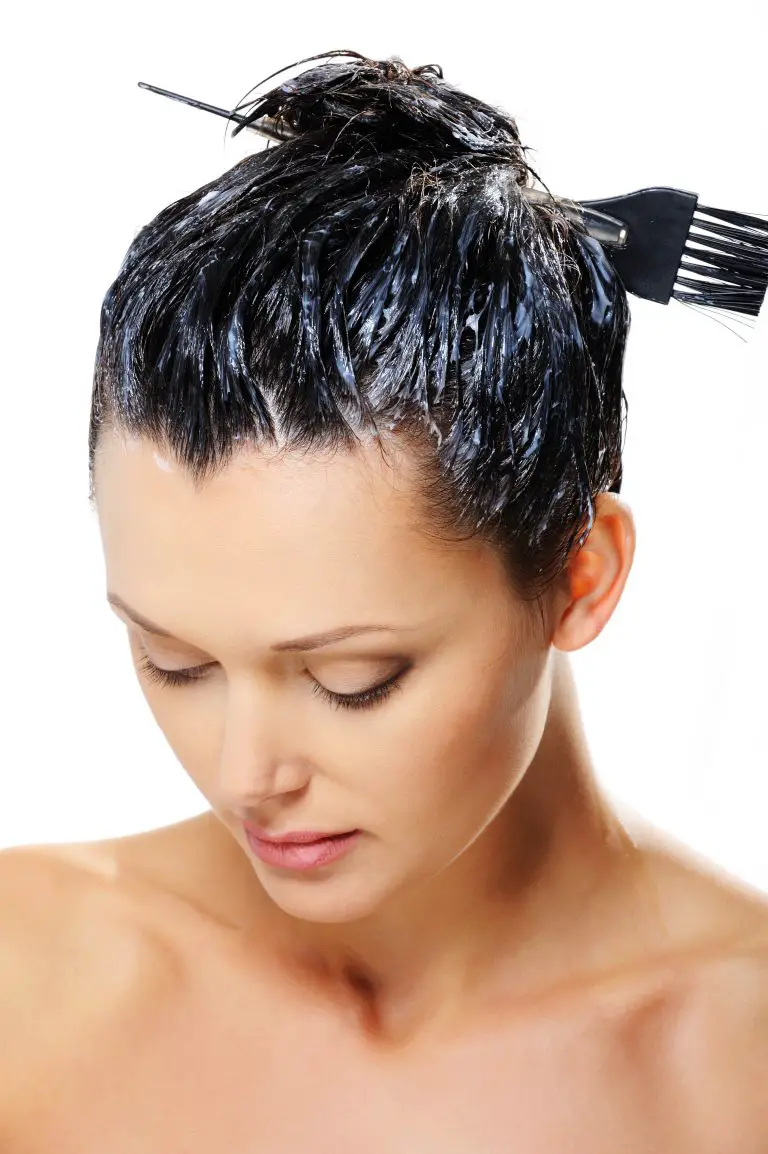
Page Contents
Coloring your hair is something that you can choose to do for any number of reasons. If you have never used color on your hair before, you may be surprised at just how many factors play a part in coloring your hair.
There are different factors that determine what color will look best on you, what you need to do to get your hair ready to color, and how often you need to color your hair. It is only when you look at all of these factors that you can set up your own hair coloring routine.
One of the main reasons why people color their hair is to try to hide gray hair. This can be especially tempting to do for adults who still feel young and are not ready for gray hair. Depending on what your original hair color is, having a few straggling grays can look unappealing.
What Shade Coverage Means For Colored Hair
Shade coverage is a hair coloring term, which basically means that whatever color you don’t want gets entirely covered. That is why you will sometimes see a hair coloring product state that it works well for gray coverage.
What this means is that the hair product in question will offer shade coverage for your gray and will catch all of those gray hairs you are trying to hide. While shade coverage can be used in reference to any color you are trying to hide, this phrase is more often used in reference to gray hair since that is the main problem-color that most people really want to cover up.
However, coloring your hair only lasts for so long. Eventually, the color you dye your hair with will wear off. When this happens, the shade that you are trying to hide will peek back out again. To cover this up, you will need to dye your hair again.
As mentioned, there are many different factors that go into how often you have to do this. Each of these hair facts affects your hair coloring routine, which is how often you have to re-apply color. Since gray shade coverage is the main factor, knowing how color plays a role is the first place to start.
On average, hair color needs to be applied to your roots every four weeks or so to cover new growth. Refreshing your color will also have to be done on occasion, which requires coloring over all your hair again.
This can be done every other month, sometimes every three months, to coincide with when you would usually get your roots touched up. However, in some cases your color might need to be refreshed sooner than two months.

Gray Coverage For Light Hair
Really light hair can get away with some gray without anyone even noticing it is there. Light blondes, and ones with ashy tones in particular, can look good. Sometimes the grays can even look like just another shade of blonde as though you have highlights in your hair.
The problem with gray comes in more as the grays multiply. This makes your hair look like it is dull and too ashy in color. Since your complexion tends to change a little with age as well, dying your hair with warmer tones is best.
These warmer tones do not have to be much different from your natural shade, just enough to give your hair some warmth. Because you only have to give a warmer shade to your hair, your hair routine can be more relaxed if you stick with a light color.
Gray Coverage For Dark Hair
The darker your hair is, the more visible those individual gray hairs will be. For this reason, when coloring there are two main options that you can go with if you have dark hair. If you prefer your hair to be one solid color, then you may be better suited with sticking to your exact hair color or with going a few shades lighter.
Either coloring option has its pros and cons. Going with a dark color like your hair will make your gray hair obvious as your roots come out. On the other hand, a lighter color will show your darker roots. Still, the latter option can look a little more natural since many people with light hair can have darker roots.
However, there are also highlights that you can get that can hide your gray hair. These give your hair different colors and can hide gray hairs by making them seem like another shade of highlights. Though this is not always blatantly obvious when your new roots come out, it is still something that needs regular touching up.
Sometimes with particularly dark hair and stubborn grays, you may need to use two different colors. One color for your grays and the other color for the rest of your hair.
Tips To Stretch Out Times Between Hair Colorings

While you will still have to get your hair colored again periodically, there are things that you can do to stretch out this time. These tips can be useful if you are trying to save money on hair dyes or even if you simply try to avoid chemicals as much as possible.
The first tip is to go with a hair color that is as close to your own as possible. The greater the difference is between your current color and the color you are going for, the faster the result will fade, and the more often you will have to refresh the color.
If you can successfully go with a color that is just a few shades different, then you can sometimes go the full three months before you need a color refresh. Of course, you have to take care of your hair in the meantime and do everything else you can for your color too.
Caring for colored hair can be done in various ways to make sure that your color does not fade. First, shampoos and conditioners that are formulated for colored hair are a wise idea. This both prevents fading and can help the color to stay crisp and bright.
There are also hair oils, masks, sprays, and creams that can be put on your hair to help keep your color. These can soften your hair, protect your hair from the sun, or protect your hair from getting damaged when you use heat to style it.
Heat protection is one of the more common things that can dull your new color. The heat, even from a hairdryer, can negatively affect your hair color. Protecting your hair is, all in all, the best possible tip for keeping your color.
Why To Not Color Your Hair Too Often
If you are seriously thinking about coloring your hair, you will have to commit to getting your coloring touched up regularly. Not coloring your hair often enough will result in a skunk-line as a different color comes out at your roots.
Just how often you should color your hair for a good gray coverage is what we will go over next. However, you should beware of getting your hair colored too often. How you are affected by coloring your hair will vary based on your current health and the specific hair dye you are using.
In any event, coloring your hair definitely causes some amount of damage to your hair. Most of the time, overdoing it when coloring your hair results in hair that becomes very brittle. Brittle hair breaks, both at the ends causing split ends, and higher up breaks as well.
Not all dyes cause as much damage to your hair. Generally speaking, the dyes that have more chemicals in them do more damage. More natural dyes are better for your hair and are less likely to make your hair brittle.
About 4 to 6 weeks is the most frequently that you will want to dye your hair. This includes touching up your hair color since, when applying the color to your roots, you will have to overlap part of your hair that has already been covered to make sure that you don’t miss a spot.
If you struggle with your health or have allergies, you will want to be extra careful. It is entirely possible to develop a severe allergy over time to one of the chemicals that are in a hair dye. Applying the dye frequently will only make this happen quicker while stretching out the time between treatments can help postpone this.

A Word On The Chemicals
There are countless chemicals that are found in hair coloring treatments. Some of the more common ones are hydrogen peroxide, ammonia, isopropyl alcohol, and the various pigments. These undoubtedly harm both you and your hair over time.
Developers are often needed in order to lighten your hair before you even color your hair. These products are every bit as damaging to your hair as the hair color itself. Hydrogen peroxide is one of the more common active ingredients found in developers.
What this does is removes the sulfur from your hair. This both lightens your hair and allows the new color to bond to it. Developers with lower numbers do not lighten your hair as much and, therefore, do not do as much damage.
Developers that are rated as a 20 or less can be used regularly with only minimal damage to your hair. Ones that are 40 are extremely strong and do damage your hair, sometimes noticeable so. Bleach is sometimes used as a DIY lightener, but this should never be used since it can irreversibly damage your hair.
There are hair coloring options that are natural. Henna is one example of a natural product. Though it can take multiple applications to get the right color, since it is plant-based and has no chemicals, you can use it as often as you wish without it damaging your hair.
There are understandably more harmful chemicals in permanent dyes than there are in semi-permanent dyes. However, the latter have to be applied more often, so the difference can potentially balance each other out.
Factors That Affect Your Hair Coloring Routine

Your hair coloring routine is mostly determined by how long you can go in between hair colorings. As hinted at in the coverage sections for light and dark hair, one of the things that will affect how often you have to color your hair is what color you are starting out with.
However, there are several more aspects of your hair that determine your hair coloring routine too. How fast your hair grows certainly determines how long you have before you have to touch up your roots coming out.
Also, your hair type plays somewhat of a role too. Fine hair takes differently to hair coloring than coarser hair does. Then, too, some hair seems naturally resistant to being colored and does not accept the new color as easily.
Each of those things is unique to you and affects how long your color stays in good condition. However, just what qualifies as in “good condition” is another factor that is entirely up to you. If you are alright with your hair looking a little dull, then you can stretch out the time in between colorings a little.
However, if dull hair makes you look sickly and pale, you will not be able to wait as long. Since some of these factors, like your hair growth, can change seemingly without warning, you should not plan too far ahead in your hair coloring routine.
Final Thoughts
Deciding whether or not you should color your hair is entirely up to you. Some people hate the idea of coloring their hair, while others choose to spend most of their lives with hair that is not their natural color.
To help your hair color last longer, there are cuticle-sealing treatments that can literally seal the new color into the cuticle of your hair. While these treatments do last noticeably longer, they are also more damaging for your hair, so use caution.
However, there is no doubt that getting the right shade coverage for your hair can give you a result that is well worth the effort and time of coloring your hair.






